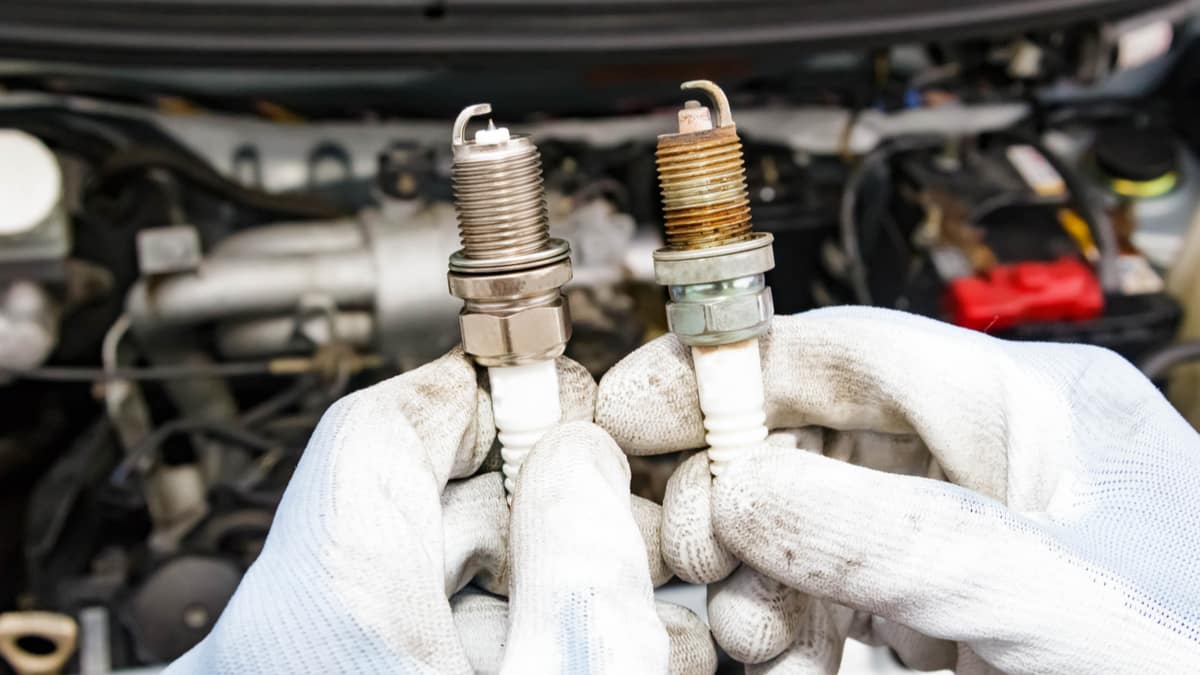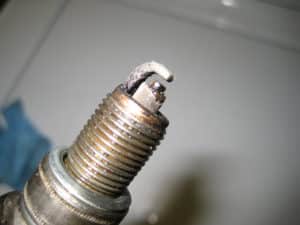


The MacGyver way: This works fine for most situations however, if you have a temperamental no-start issue, this way may not stress the ignition sufficiently to reproduce the fault.

I’ll show you two ways to test the MacGyver way and the textbook way.
SNOWBLOWER BAD SPARK PLUG SYMPTOMS HOW TO
You may already know how to test for spark if so, good job if not, buckle up. Checking spark is one of the go-to tests every self-respecting DIY mechanic needs to know.

Common causes include carburetor issues, incorrect gas, overheating engine, ignition fault Common causes include restricted airflow, bad gas, carb mix too rich, choke stuck, ignition system fault It often gives you a heads-up on an underlying issue. The color can tell a ton about what’s going on inside your snowblower engine. Checking Snowblower Plug ConditionĪfter removing a spark plug, it’s worth checking the color of the electrode. I’ve been caught out before chasing a problem that didn’t exist, and I’ve learned my lesson.
SNOWBLOWER BAD SPARK PLUG SYMPTOMS CODE
I never assume the plug I remove is the correct code I’ll check the code against the manufacturers’ specs. Symptoms of incorrect heat range plug are numerous they really do cover a wide selection of complaints. Not too many will be caught out by the thread diameter or length, but fitting the wrong heat range is very common. Problems commonly arise when the incorrect plug is fitted. It’s a balancing act, and your snowblower engine maker has tested and fitted the optimum heat range plug. A plug is designed to get just hot enough to burn off contaminants that naturally occur inside the combustion chamber, (oil & carbon) however, the plug shouldn’t get so hot that it ignites the fuel mix before firing the plug. Heat range is, however, a little more interesting. Reach is simply how far the plug threads into the combustion chamber or thread length. Thread size is self-explanatory it’s the diameter of the plug threads that obviously must match that of the engine. A code stamped on the plug insulator identifies the plug type. Plugs are grouped broadly by heat range, reach, and thread size. While spark plugs may look identical, they are in fact different. The procedure is simple, and if you’ve done this before, you can likely skip this section. Removing the spark plug will require a ratchet and deep socket, also known as a plug socket. I’ve got you covered we’ll do all of that in this post. The plug will need some maintenance every year, though, it will need to be checked, cleaned, and gapped correctly. However, as snow blowers generally work for only a few months of the year, the spark plugs only need to be changed every second year. Common issues include fouling and poor gapping, and we’ll look at both of these a little later.Ī spark plug is typically changed in a small engine once a year. While spark plugs don’t outright fail very often, they do cause problems. I can’t tell you how many small engines I’ve fixed by simply changing the spark plug. You’ll learn how to remove it, check plug type, check spark, clean it, gap it, and how to refit it correctly. In this post, you’ll learn the importance of a spark plug. Snowblower spark plugs should be changed every second season or every two hundred hours of operation, whichever comes first. Spark plugs have it tough they must withstand voltage spikes, extreme heat, pressure, and chemicals, all without skipping a beat.


 0 kommentar(er)
0 kommentar(er)
